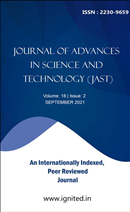Fast Multi-Scale Structural Patch Decomposition for Multi-Exposure Image Fusion
Exploring Edge Preservation for Multi-Exposure Image Fusion
Keywords:
computational photography, multi-exposure image fusion, high-dynamic-range imaging, tonemapping, adaptive filtersAbstract
Recent computational photography techniques play a significant role in dealing with the widedynamic range of real-world scenarios, which include brightly lit and poorly lighting areas. An importantpart of many of these methods is integrating data from several photographs taken at varying exposures.One such technique is high-dynamic-range (HDR) imaging, which can reconstruct radiance maps frompictures acquired with more conventional imaging hardware like a camera or scanner. For a long time, HDRpicture technology struggled with the dynamic range (DR) restrictions of traditional displays and printingmethods. As a result, the whole dynamic range cannot be faithfully reproduced by these gadgets. Tonemappingmay reduce dynamic range (DR), but it requires more processing power from the computer. Forthis reason, optimizing the content of the synthesized image from a set of multi-exposure pictureswithout calculating HDR radiance and tone mapping is sought. The purpose of this thesis is to develop anovel approach to multi-exposure image fusion by making advantage of the edge preservationcapabilities of adaptive filters. Recently, there has been a surge of interest in studying exposure fusion.None of the tactics discussed in this thesis exclude exploring the possibility of creating a brand-newalgorithm. Instead, we'll be leveraging non-linear filters' edge preservation properties to identify andapply the perception of weak textures that should be considered in the context of exposure fusion,creating weight maps and investigating further possibilities for improving detail.Downloads
Download data is not yet available.
Published
2021-09-01
Issue
Section
Articles






